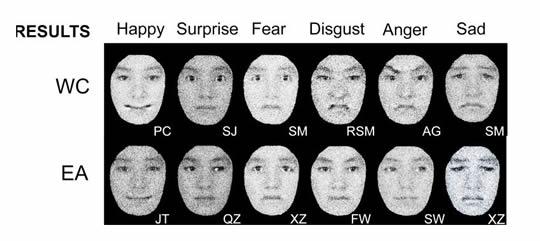Cultural Differences in Reading Faces
 The hottest new thing in neuromarketing is facial coding – the reading of fleeting facial expressions to determine true emotional reaction. Although the concept isn’t new – it dates to Paul Ekman‘s groundbreaking research in the 1950s to 1970s – the ability to capture and interpret facial expressions automatically with simple cameras and even webcams is driving the new interest. Big companies like Coca Cola and Unilever are adopting the technique as standard (see Neuromarketing: For Coke, It’s the Real Thing), and the technology is being made available to companies of any size by firms like Affectiva and YouEye.
The hottest new thing in neuromarketing is facial coding – the reading of fleeting facial expressions to determine true emotional reaction. Although the concept isn’t new – it dates to Paul Ekman‘s groundbreaking research in the 1950s to 1970s – the ability to capture and interpret facial expressions automatically with simple cameras and even webcams is driving the new interest. Big companies like Coca Cola and Unilever are adopting the technique as standard (see Neuromarketing: For Coke, It’s the Real Thing), and the technology is being made available to companies of any size by firms like Affectiva and YouEye.
One of Ekman’s breakthroughs was the discovery that most facial expressions are similar across many cultures. While this hasn’t changed, new research shows that there are indeed differences:
Some prior research has supported the notion that facial expressions are a hard-wired human behavior with evolutionary origins, so facial expressions wouldn’t differ across cultures. But this study challenges that theory and used statistical image processing techniques to examine how study participants perceived facial expressions through their own mental representations.
…The study found that the Chinese participants relied on the eyes more to represent facial expressions, while Western Caucasians relied on the eyebrows and mouth. Those cultural distinctions could lead to missed cues or misinterpreted signals about emotions during cross-cultural communications, the study reported.
Reading into this, it seems the study focused more in how facial expressions are processed by viewers vs. physical differences in manifestation of emotions. Either way, this is a bit of a caution to market researchers hoping to gauge reactions to their ads or products. It might be a good idea to add one or two questions about cultural origins to check for any differences. Of course, that would be a good idea in any case – facial expressions aside, a given ad or product may provoke very different reactions among people from various cultures.
